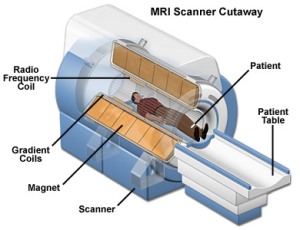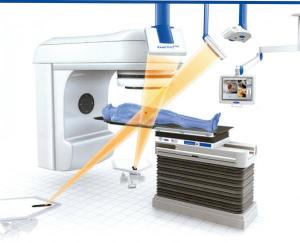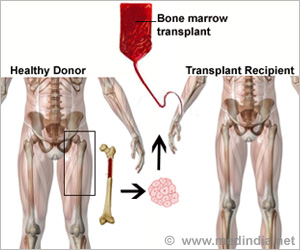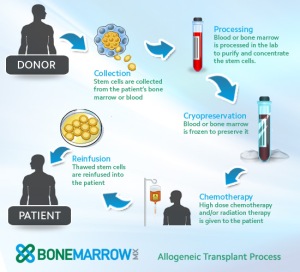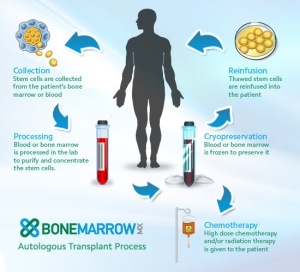The diagnosis of cancer always requires a biopsy of the tumor to do a histologic study to verify the stage of differentiation as well as to determine biological and genetic markers.
In order to measure the cancer development, clinicians also use:
- Physical exploration.
- Radiography.
- NMR (nuclear magnetic resonance).
- CT (computational tomography).
- Other techniques.
There is a technique called TNM (tumour, nodules, metastasis), which classifies the progression of cancer using the size and extension of the primary tumour, the lymphatic affectation and the presence of metastasis.
According to the treatments, these can be used alone or together according to the type of cancer. The aim of all treatments is to eliminate the tumour and cure the patient in early stages.
There are mainly three kinds of treatments:
- Surgery: removes the tumour in part on in its entirety.
- Radiotherapy: exposes the tumour to radioactivity to prevent the cancer cells to multiply.
- Chemotherapy: administration of (chemical) substances to destroy cancer cells or prevent them from spreading.
Chemotherapy and radiotherapy act on cancer cells as well as on normal cells (healthy cells), which explains the side effects.
However, the scientific community is improving new therapies and new mechanisms to defeat all types of cancer such as biological therapies, hormonal therapies, stem cells and bone marrow transplants and also supportive therapies.
To go into more detail, I am going to further explain these treatments deeply.
Surgery
Surgery is used when tumours are small and located in a specific site. Part of the tissue that is around the tumour is removed to make sure that all cancer cells have been eradicated.
If cancer has reached other areas, through the blood or the lymphatic system, other treatments should be applied.
Radiotherapy
Radiotherapy uses high-energy particles that interact with the cells in our body.
Human cells are sensitive to this radiation and at high doses can kill any cell. Therefore, the energy is directed towards the cancer cells, but it may also affect the immediate surroundings. Each session lasts 20 minutes and zones where the radiotherapy is going to be applied are marked whereas the other areas are protected.
This treatment can be a unique treatment in cases where tumours are especially sensitive to radiation and have not reached other areas. Also, radiotherapy can be used before surgery to decrease the size of the tumour and make the extirpation easier.
Chemotherapy
Chemotherapy uses medicines which function is to eliminate, harm or delay the growth of cancer cells. The problem is that these medicines act, above all, against cancer cells but also have an effect in normal/healthy cells.
The action takes place in cells which division is fast, thus interrupting their growth. Other chemotherapeutics change the environment conditions (i.e. negative for these cancer cells).
Last years, a combination of chemotherapeutics has been used because it has been shown that a combined/joint action is more efficient in destroying the tumour. These combinations try to be more efficient in terms of cancer cells and less harmful to normal cells.
There are different ways of having chemotherapy:
- Oral tablet.
- Intravenous or intramuscular injection.
- Bone marrow puncture.
Because of its high side effects, chemotherapy is administrated in cycles with a rest period in between. In this period, there is an hematologic recover given that during chemotherapy the bone marrow – where blood cells are produced – is affected.
Side effects
- Vomits.
- Nausea.
- Diarrhea.
- Ulcers in the mouth.
- Temporary loss of hair
- Anemia and fatigue.
However, side effects depend on the type of medicine is administrated, its duration and the general state of the patient.
A combined radiotherapy and chemotherapy treatment is also possible: sometimes chemotherapy is used before radiotherapy to make the cancer cells sensitive to the radiation. However, other times radiotherapy is applied to make sure that all cancer cells are eliminated.
Bone marrow transplant
It takes place when there is a damage/harm in the bone marrow that blocks normal functions such as the generation of blood which is important and fundamental for the human life.
Chemotherapy is administrated to destroy cancer cells but sometimes can damage the bone marrow and other organs.
Generally, doctors and clinicians do not use high doses of chemotherapy. However, when cancer does not disappear with a moderate dose it requires the administration of a higher dose (sometimes in combination with radiotherapy). This higher dose will destroy the bone marrow and that is why a bone marrow transplant is needed.
One method is using stem cells to produce blood cells. The patient has to be anesthetized because a litter of bone marrow has to be extracted – to get a sufficient number of stem cells – from the body by multiple punctures.
Another method consists in using cytokines, which allow peripheral blood stem cells to be collected (leukopheresis).
Once these stem cells are extracted they are placed into a transfusion bag in order to be administrated via intravenous to the patient.
Sometimes, this is the only possibility to cure patients with leukaemia and other illness such as malignant lymphoma, bone marrow aplasia, etc.
There are two types of stem cell transplant:
- Allogeneic stem cell transplant: the transplant cells (bone marrow or peripheral blood) come from a donor (relative or not) whose tissue is almost identical to the patient’s tissue.
- Autologous stem cell transplant: obtain bone marrow from the own patient and keep it frozen (-200oC) to carry out the transplant after the administration of a higher dose of chemotherapy.
This latter is carried out just when it does not exist a possible donor or the risk is too high to do an allogeneic transplant (rejection).
If the patient has not a twin, the probabilities to find a compatible donor are not higher than 35%.
Once the transplant is done, it takes 3-4 weeks for the bone marrow to recover completely.
Due to the higher risk of infections and hemorrhages, the patient stays in the hospital in order to receive transfusions, antibiotics and treatments to stimulate the growth of granulocytes (immune system cells).

